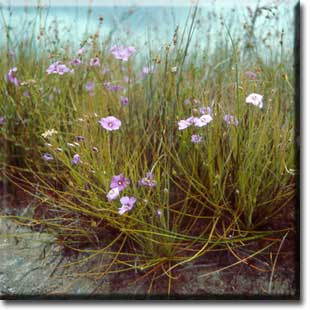Byblis - the Rainbow PlantsCarnivorous Plants / Insectivorous Plants
Byblis is native to Australia and typically is a desert plant. Yet it resembles our sundew, Drosera. It has sticky hairs that trap insects when they are fooled into thinking that the glandular secretions are drops of nectar. But Byblis differs from the sundew because its hairs do not curl around the captured prey. 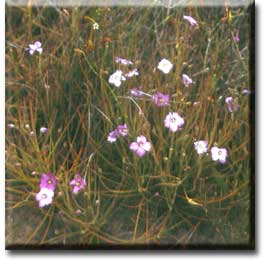 Byblis gigantea grows in southwestern Australia. It's a perennial plant that likes areas of acid sand that dry out in summertime. Often not a typical bog plant, it can be found in shrubby areas as well as open areas of white sand. Byblis gigantea can grow in dense groupings. Its narrow leaves are covered on all surfaces by sticky hairs that trap insects. Thus, any insect passing through such a mass of leaves is likely to be trapped. Sticky hairs do not change position once the insect is caught. The insect is gradually digested where it landed. The leaves as well as the outer floral structures (sepals) of the flowers of Byblis gigantea are densely covered with sticky hairs. The flowers of Byblis are red-purple, and are probably attractive to a kind of bee. 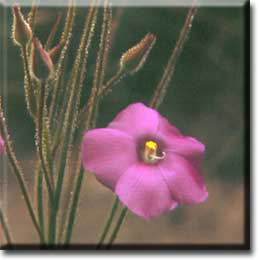 The flowers of Byblis gigantea look symetrical at first glance. However, we see that the style (white) and the stamens (yellow) curve to use side of the flower. This curvature provides an approach pattern for a bee, orienting it so that it will get showered with pollen or deposit the pollen on the tip of the style. In a sectional view, we se the stamens and the style curving in different directions. The wide white stamen bases are curved and are responsible for the way that the stamens are arranged with relations to an incoming insect. The stamens of Byblis gigantea don't open by slits. Rather, they have flaring holes at their tips. Byblis is one of a few flowering plants that have what is known as buzz pollination. In this process, the insects of an insect beat at frequencies that set the stamens in motion. As the stamens vibrate, the pollen grains shake out and dust the surfaces of the insect and catch on its hairs. 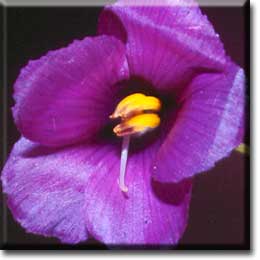 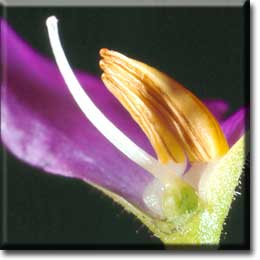 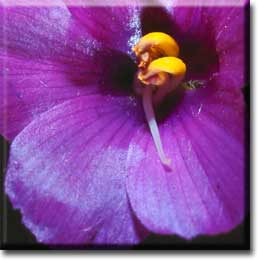 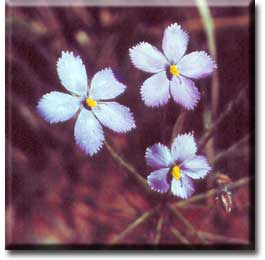 Byblis linifolia grows in Queensland, in northeastern Australia. It likes acid sand areas, but often grows in a straggling fashion. 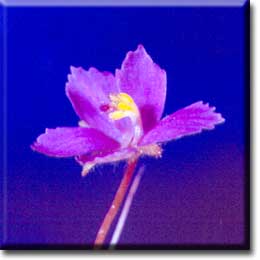 The flowers of Byblis linifolia are smaller than thoser of B. gigantea. The petals are fringed. Like B. gigantea, the stamens of B. linifolia have a curved shape and are adapted to buzz pollination. |
